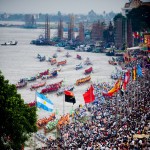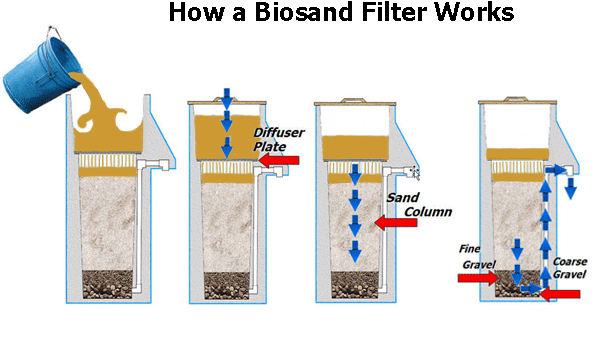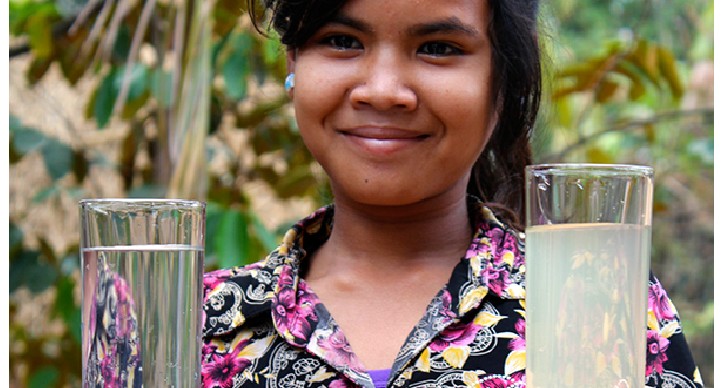Hundreds of paddle-powered boats raced at the Bon Om Touk water festival this month on the Siem Reap River, an occasion in which Cambodians celebrate the Mekong River’s biannual water flow reversal and the beginning of the fishing season. While the river itself wasn’t the main object of attention during the festivities  in the Southeastern Asia country, it did serve to highlight the dire need of the country to clean up it’s drinking water after decades of inner turmoil.
in the Southeastern Asia country, it did serve to highlight the dire need of the country to clean up it’s drinking water after decades of inner turmoil.
There are several reasons for the lack of clean drinking water in the country, according to Nthabeleng Emmel, Programs Manager for Water for Cambodia in Siem Reap, who said that lack of access is a major inhibitor. “Most people in Cambodia have no access to safe drinking water; they use contaminated water sources such as rivers, ponds, [and] wells.” This can lead to many different kinds of complications, such as gastrointestinal diseases like diarrhea, Emmel explained. Also, many of the population, especially in the countryside, use large open jars called cisterns to collect lake, stream and rain water. If not properly treated, this water can contain mosquito larvae, leading potentially to malaria and dengue fever.
Another reason many Cambodians don’t have easy access to clean drinking water is poverty. With the average Cambodian’s annual salary just under three dollars a day, many choose to purchase food as opposed to bottled water, which on average costs about sixty cents for a liter and a half.
While wells can be dug and used to get water, the quality may not be so good, said Mrs. Emmel. “Deep wells are usually said to be clean and some organizations dedicate their time drilling wells for rural communities but the utilization of [these] wells is questionable. Some areas have high content of iron in the water which usually comes with color, smell and [a bad] taste.”
Emmel’s organization builds and installs Biosand Filters for rural populations–the ones which experience the greatest difficulty in obtaining clean drinking water. The  filter uses sand and gravel to remove up to 99 percent of the bacteria and protozoa in the water which is poured into it. “Water for Cambodia has adopted a Biosand filter which provides safe drinking water to the rural population,” said Emmel. “By the end of 2014 we will have installed over 14,000 filters reaching out to at least 84,000 individuals.”
filter uses sand and gravel to remove up to 99 percent of the bacteria and protozoa in the water which is poured into it. “Water for Cambodia has adopted a Biosand filter which provides safe drinking water to the rural population,” said Emmel. “By the end of 2014 we will have installed over 14,000 filters reaching out to at least 84,000 individuals.”
Once the filters have been installed, the organization soon returns to test the filtered water in their lab. “We follow up with water testing which we do in our own lab, do quality control by checking all installed filters for any maintenance that may be needed and any other support the families may need,” said Emmel. A part of this support is educating the receivers of the filter on its use. “The challenge which we hope to overcome is getting people to understand the importance of pouring water into this filter on a daily basis and doing proper maintenance which only requires a few minutes.”
Mrs. Emmel is hopeful that the Biosand filter will continue to give rural Cambodians clean drinking water well into the future. “Biosand filters are the best solution for Cambodia as they are easy to use, maintain and they have a long life span [at least 15 years]. Their maintenance is inexpensive as the contents of the filter do not need to be changed but rather cleaned [on a regular basis]”.
By Brett Scott
Photo: Jonna Davis

Thank you for the water filters! How can I help more to have them?
when we came here we did 2yrs researched.but still didnt fine alot of this information.but from now my husband like reading this.good resource.
I live in Cambodia for long time but I never knew about water filter here, thank you so much for your information I will tell my family about this too.
I am from Indonesia, it is so hard to not notice the water here (even water from the tap) has a horrible smell and taste. Good to know that they goin to do something about it. Great article btw!! Thanks for the info :)
i didnt know that.i love the article.i live in cambodia,good imformation to know.
I enjoyed learning about the use of sand filters in Cambodia to produce safer water for drinking and cooking. The picture was nice, and the young lady looked healthy and happy. A nice article about something good happening in the world Thanks.